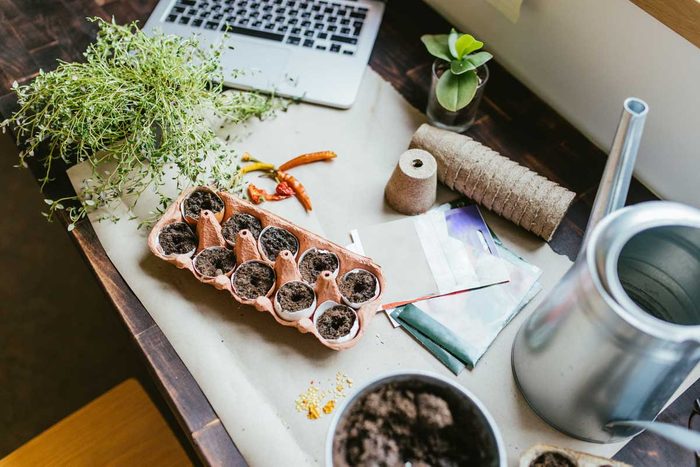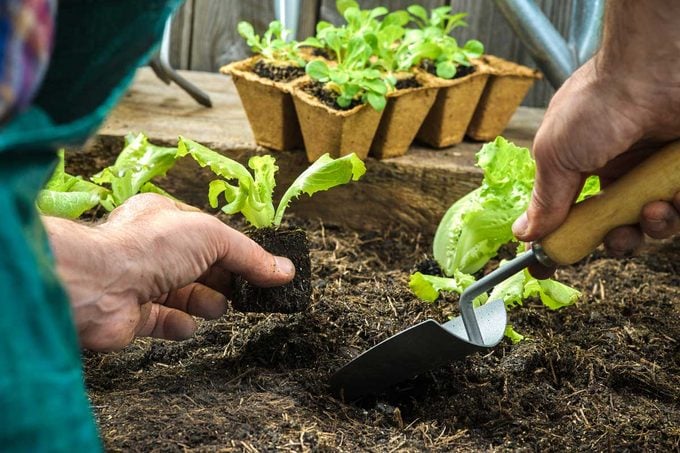A Complete Guide to Seed Sowing
Updated: Mar. 06, 2024

Starting plants from seed is easy when you follow a few simple rules. Here's what you need to know about sowing seeds.
Who wants to wait around for seeds to grow? You do! That is, if you want to save money; grow a greater selection of plants; and enjoy an ongoing natural process that dates back millions of years.
Bonus: If you’ve got kids, get them to help. If they’re growing vegetables, they’re more likely to eat what they grow. And you’ll turn them into budding gardeners. Starting seeds is easy, too! Nature makes sure of that.
On This Page
What Does It Mean to Sow Seeds?
Sowing seeds simply means scattering them where they have a chance to germinate. This could be outdoors on bare ground or indoors in seed-starting trays. Many gardeners prefer the latter because they have more control over germination and, frankly, because they can give their green thumb a workout any time of the year.
When To Sow Seeds
Timing is important. Let’s say you’ve got a packet of squash seeds and you winter sow them indoors in January. Squash seeds germinate in about a week and are ready to transplant into the garden within a month. But if you live where winters are cold, there’s probably still snow on the ground in February, so those squash plants have nowhere to go.
Fortunately, seed packets give you a heads-up on when to get started. A packet of seeds might say “sow seeds indoors four weeks before your last average frost date.” If your last average frost date is May 15, then start your seeds around April 15. Explore our planting calendar to see when to plant particular vegetables.
While you’re at it, also learn: How to use lunar phases for planting and harvesting.
Where To Sow Seeds
- Indoors. You’ll need a container or seed-starting tray, a soilless seed-starting mix like Jiffy, some seeds and fluorescent lights. Some people use a heat mat to hasten germination, but that’s optional. You can buy seed-starting supplies at the garden center or reuse items you have around the house, such as egg cartons or old plastic flower cellpacks.
- Outdoors. This requires a bare patch of well-drained soil that is ready to be worked (not frozen, not sopping wet). It helps to loosen the soil before planting and amend with compost. You can also sow seeds in your outdoor containers. You could scatter some calendula seeds around spring-blooming bulbs growing in a large container so the calendula can take over once the bulbs are through.
How To Sow Seeds
Outdoors is easy. For a bed of wildflowers, it can be as simple as scattering seed wherever you want and gently raking over the soil. To maximize space, vegetables are usually planted in rows. That requires digging a trench 1/2- to one-inch deep, placing seeds at specific intervals (check the seed packet for that information), then raking over the trench to fill it in.
Indoors is slightly more complicated, but you get to do it earlier! Clean seed-starter containers or cellpacks and disinfect with a 10 percent bleach solution. Fill containers with seed-starting mix, moisten, then sow seed according to packet directions, which will tell you at what depth.
Keep the seed consistently moist. One way is to cover the container or tray loosely with clear plastic food wrap to heighten the humidity. (Store-bought seed-starting trays come with greenhouse lids.) Keep an eye on the trays and remove the plastic covering once seeds sprout. Then put the container or tray within four to six inches of two 40-watt fluorescent lights. Although a bright, southwest-facing window will do in a pinch, seedlings will grow “leggy” as they struggle for light.
Let the seed starting mix dry out slightly before watering again. Keeping the seeds too wet encourages plant disease.
What To Sow
This depends somewhat on personal preference but also on practicality. Some plants really aren’t worth the bother. Take begonias, which have tiny seeds, are tough to germinate and slow to grow. Plus, ready-to-plant begonias are inexpensive and readily available at garden centers.
Others are so easy you can scatter the seed on bare ground and let nature take its course. Examples include annual poppies, larkspur, cleome, bachelor’s buttons and marigolds.
Edibles like tomatoes, peppers, cabbage and broccoli are simple to start indoors, while squash, cucumber, melons and beans can be started outdoors right where they will grow. As a general rule, the bigger the seed, the better suited it is to sowing outdoors.

Bear in mind that if you are starting plants indoors, you will need to acclimate them to the conditions outside gradually before starting your outdoor garden. It’s called hardening off, and it means taking them outside a week before they’re going in the ground.
Leave them in a shady spot sheltered from the wind for two to three days. Then put them in a spot that gets a few hours of sunlight. Finally, take them to a sunny spot where they will be planted. To avoid stressing the seedlings, plant them in the morning or evening — not during the heat of day — and water well.
Pro tip: Here are some excellent sources for buying seeds:
Next: Figure out if hugelkultur raised bed is better than a traditional bed for your garden.